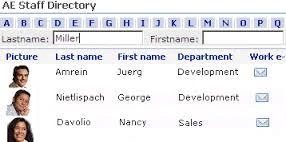Read this if you don’t want to lose business when key players leave!
This column will look like a continuation of last week’s column, and in some ways it is. But the topic is one that we should really pay attention
to unless you want to see potential new business walking out the door to your competitors.
One of the unfortunate things we have learned running logistics networks is that it is not uncommon for companies to not keep their contacts updates.
Really?
This is pre-basic Business 101. And I guess you might even have seen it all as well. Partner companies have changed addresses, phone numbers and even e-mail domains and not forwarded on the information to their partners and clients. In our business we constantly see how when a key player is gone they aren’t deleted and replaced on websites, directories, etc., and agent partners and clients aren’t updated. Others even contact us trying to chase down their own partners.
We have to ask ourselves this question: Do you want to get rid of us?
When you don’t keep up with the contacts we all lose sight of you. You are telling us that we are not important enough to be kept up on your personnel changes.
I kind of know where some of you will be coming from on this. Making changes to staff directories, doing mail broadcasts, etc., is one of those
tasks that never seem as important to do right now as many other urgent things. And when you don’t put it at the top of the list to do it surely
gets forgotten. But just because something might not be considered urgent doesn’t mean that it isn’t very important. And by the same token just
because a task might seem mundane doesn’t mean that non-follow up might not hurt you in a not so mundane way.
I have some recommendations on how to keep yourself up to date with your contacts:
- Designate one person who is primarily responsible and have another person who is secondarily responsible for making all the directory changes. This way you will know exactly who to speak to on these issues and that person will also know that it is their job so it will be automatic.
- Keep a sendable directory in Exel or PDF (or both) and send out when key staff leave, new staff are taken in. Send the update out every time you have a personnel change. However, if you have a large company with semi-regular turn over then I would send this out monthly. (We do the same with our network members.) Use PDF if you are interested in the presentation of the document. If you do use PDF please remember to hyperlink the e-mail addresses and the URL’s that might be in there. Add logos and photos in the PDF as well. Names go much better with faces to some recipients. As far as Exel, I would use this in a CSV format or something similar that can be uploaded to e-mail clients such as Outlook, Gmail, etc. It doesn’t look as nice that way but it is much more useful. And if you are very resourceful, send both the PDF and the Exel file. Some might think it overkill but the truth is it will be very helpful to some people.
- Make the former staff member’s e-mail into a forwarding mail. This should be forwarded to their replacement, or if a replacement is not yet in place this should be sent to the person “covering” for them. You can also have the e-mails forwarded to a “team” such as operations, sales, etc., but in such a case it must be made very clear who needs to be the follow up person on this.
- Keep a personnel directory on your website and update it ASAP. Most companies put one singualar point of contact on the website. I get that. In some cases the companies worry about spam and unwanted contacts. On the other hand you can put at least the person’s name and title (photos make a professional touch) so that people will know how to direct the communication. And a singular point of contact should better be with at least two people receiving the mail in case one is incapacitated. And in all cases when more than one person is covering a mail account, they should cc or bcc the other responsible people when replying. (If they don’t need to be kept up on the follow up mails then always bcc. Don’t be a part of the e-mail avalanche!)
- Have new incoming staff send out personal e-mail broadcasts to agents, clients and operations partners related to his / her position. This should be a professional but friendly introduction, short explanation of their role / job description and optionally a little professional background and personal information that might help make the introduction more personable. It gets people started communicating with them right away and makes turn overs as seamless as possible.
- Institutionalize it. Make this process a permanent part of your work flow, operations manual, ISO program or work handbook so that this does not get overlooked on a regular basis.
As time goes on and your company grows you will definitely undergo staff changes. This might be at the top and it might be at the bottom. But either
way do not underestimate the frustration of having to reach a point person to have their e-mail bounce, their phone disconnected or otherwise. Many of us will see this as unprofessional and, remember, if agents need a quick service, such as with a rate request, they will give up and go to your competitor. Please don’t cry to us if they do!





